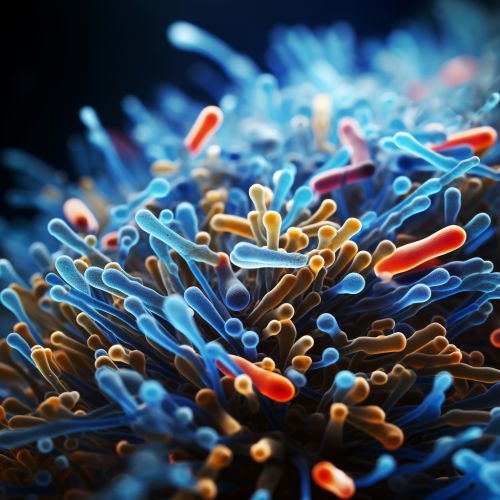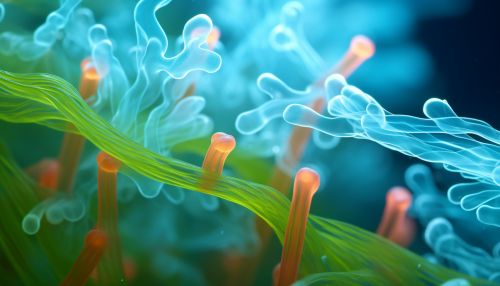Pseudomonas
Overview
Pseudomonas is a genus of Gram-negative bacteria, known for their metabolic versatility and ability to thrive in a wide range of environmental conditions. They are rod-shaped and possess polar flagella, which allow for motility. Pseudomonas species are ubiquitous in nature, found in soil, water, and plant and animal tissues. Some species are pathogenic to humans, animals, and plants.


Classification and Taxonomy
The genus Pseudomonas belongs to the family Pseudomonadaceae and the order Pseudomonadales, within the class Gammaproteobacteria. The genus was first described in 1894 by German botanist Walter Migula. Over the years, the taxonomy of Pseudomonas has been revised multiple times due to advancements in molecular biology techniques, particularly DNA sequencing.
Morphology and Physiology
Pseudomonas species are typically rod-shaped and range in size from 0.5 to 1.0 μm in diameter and 1.5 to 5.0 μm in length. They possess one or more polar flagella, which provide motility. Pseudomonas species are strictly aerobic, meaning they require oxygen for growth. They are also capable of utilizing a wide range of organic compounds as energy sources.
Metabolism
Pseudomonas species are known for their metabolic versatility. They can metabolize a wide range of organic compounds, including sugars, amino acids, and hydrocarbons. This metabolic flexibility allows them to thrive in diverse environments. Some species are also capable of performing denitrification, a process that converts nitrate to nitrogen gas.
Ecology
Pseudomonas species are ubiquitous in the environment. They can be found in soil, water, and plant and animal tissues. They play a crucial role in nutrient cycling, particularly in the decomposition of organic matter and the transformation of nitrogen. Some species are also known to form biofilms, which are communities of bacteria that adhere to surfaces and are encased in a matrix of extracellular polymeric substances.
Pathogenicity
Certain species of Pseudomonas are pathogenic to humans, animals, and plants. The most well-known is Pseudomonas aeruginosa, a common cause of hospital-acquired infections. P. aeruginosa is particularly problematic due to its inherent resistance to many antibiotics. Other pathogenic species include Pseudomonas syringae, which causes disease in a wide range of plant species, and Pseudomonas pseudomallei, the causative agent of melioidosis.
Antibiotic Resistance
Pseudomonas species, particularly P. aeruginosa, are notorious for their resistance to antibiotics. This resistance can be intrinsic, due to the inherent characteristics of the bacteria, or acquired, through the acquisition of resistance genes. Mechanisms of resistance include efflux pumps, which expel antibiotics out of the cell, and enzymes that degrade or modify the antibiotics.
Research and Biotechnology
Due to their metabolic versatility, Pseudomonas species are of interest in research and biotechnology. They have been used in bioremediation, the use of organisms to clean up environmental pollutants. For example, certain strains of Pseudomonas have been used to degrade oil spills. In addition, the ability of Pseudomonas to form biofilms has made it a model organism for studying this phenomenon.
